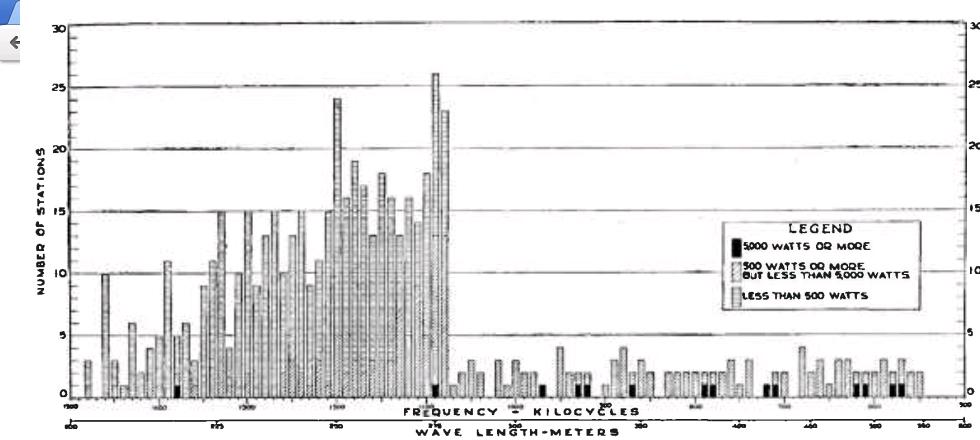This graph provides an interesting glimpse of the state of American broadcasting 90 years ago. It appeared in the March 1926 issue of Radio Broadcast, and shows the number of stations, and their powers and frequencies, as of November 1, 1925. It shows a total of 536 stations then on the air.
The vertical axis shows the number of stations, and the horizontal axis is the frequency. The top of the broadcast band (1500 kHz) is at the left, and the bottom (550 kHz) is at the right. The most occupied channel was 1090 kHz, with 26 stations. Fourteen channels had one station of 5000 watts or more, those frequencies being 570, 580, 610, 620, 710, 720, 780, 790, 870, 920, 930, 970, 1090, and 1380 kHz.
Interestingly, the top of the dial, 1180-1480 kHz had considerably more stations. I assume that this was because the bottom of the dial was largely populated with legacy stations. 910 kHz was vacant. This frequency is the second harmonic of the most common intermediate frequency employed in most modern receivers, 455 kHz. Since there were few superhets in use at that time, I assume that 455 was later picked because 910 was vacant, rather than 910 being left vacant because of the IF’s.
Click Here For Today’s Ripley’s Believe It Or Not Cartoon
![]()

